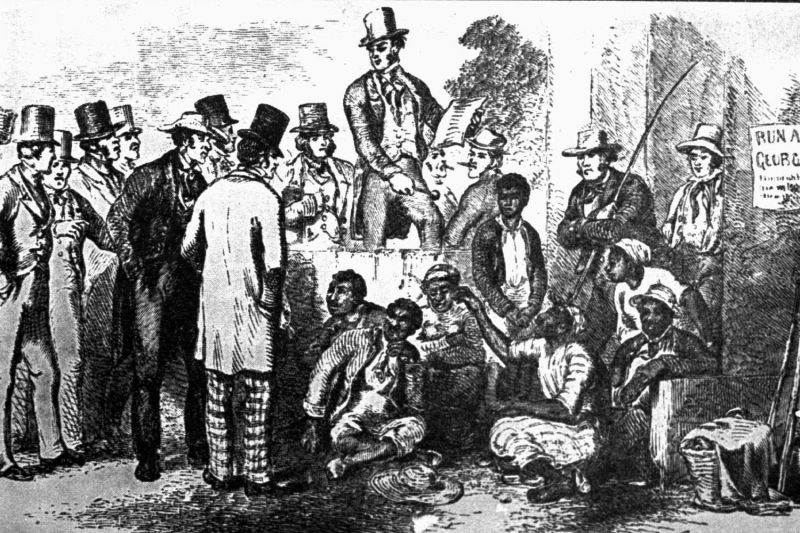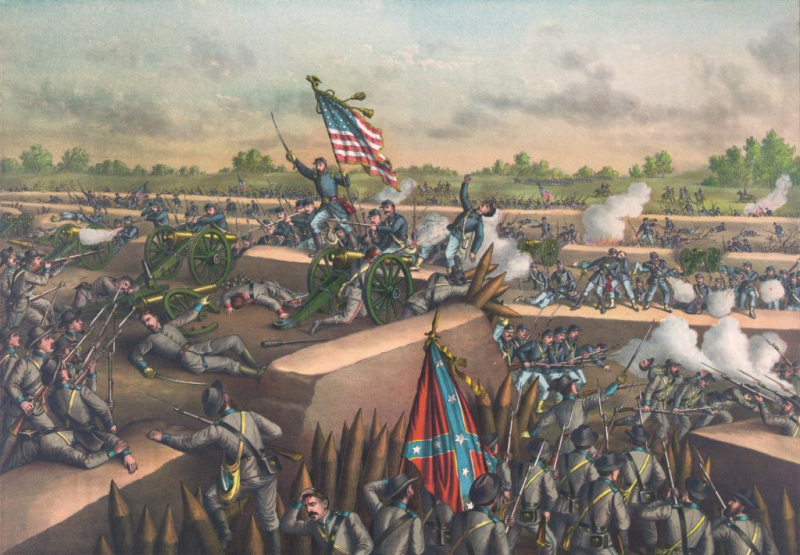Top 5 Facts About Baltimore in the Civil War
Baltimore, which was established in 1729 as a catholic city in United States in a catholic colony, is a city of captains and demons, national anthems and ... read more...sports stars, cinematic luminaries, images of renowned writers, and more. The city endured carnage, grief, and war losses during the civil war's years. Here are some facts about Baltimore in the Civil War for you.
-
Maryland is still very far north, making it theoretically a Southern state, which puts it in need of a solution. Maryland opted to remain neutral and take no sides when the succession started. However, the Confederacy made the decision to take advantage of the chance to establish it due to its geographic location and its substantial reliance on slavery for sugar production.
Fighting broke out as a unit of Union soldiers arrived in Baltimore with greetings and demands, resulting in the first Civil War fatalities. It didn't take long for the Confederacy to take control of Baltimore, and this occupation continued throughout the war.
The consequences were taken for granted, and this set off a series of events, including Baltimore was unable to continue selling sugar to the Southern states; the slave trade started to flourish; and after the slaves were successfully freed, Baltimore became an ideal location for them to settle down. Baltimore consequently almost exclusively became an African American metropolis.

Source: blogspot.com 
Source: blogspot.com -
More than 20 churches, 30 charitable organizations, and many schools were founded by Free Negroes. The number of free slaves at that time was mostly about 20 million people, they are the primary tools of labor in productive activities and play a crucial role in agricultural, industrial, and the Underground Railroad. All were freed following the Civil War, resulting in a fresh wave of settlers in this area. Those who fled from Maryland's Eastern Shore frequently stopped in Baltimore. Before moving further north, Frederick Douglass spent his formative years in Baltimore honing his reading and writing skills.
Instead, a number of factors were at play, not the least of which was a twofold increase in German and Irish immigrants who were willing to work for low wages between 1840 and 1860. They won the favor of many city business owners who had previously relied on the labor of slaves and free blacks as a result. German and Irish residents increased in number in the city from 21,000 in 1850 to 48,000 in 1860. The free black and slave male labor force was badly influenced by cheap immigrant labor, especially in the wards [voting districts] bordering Baltimore's waterfront. Many male Afro-Americans were ejected from the workforce after working as ship caulkers and other comparable vocations. Where they had formerly held positions requiring manual labor, they were forced to work as waiters, servants, and coach drivers.
Source: haikudeck.com 
Source: WNYC Studios -
Abraham Lincoln received a stern letter of caution from Baltimore Mayor George W. Brown in the late afternoon of April 18, 1861. The passing of troops has "exasperated the public to the fullest degree," Brown wrote. The 4th Artillery Regulars and five companies of Pennsylvania militia raced into a mob throwing rocks at the Bolton Street station earlier that day. Black orderly Nicholas Biddle, 65, was the target of the mob's ire. Even though it was a tiny occurrence, it showed the racial tensions that led to the American Civil War.
The city had a civil war on Friday, April 19, between Democrats and Confederate supporters on one side. The Massachusetts and Pennsylvania militia regiments, who had been enlisted in federal service, were traveling to Washington, the nation's capital. The battle started at the President Street Terminal and moved to Presidents Street, Howard Street, and finally the Camden Street Terminal before ending there. The riot is frequently referred to as the "first carnage of the Civil War" since it resulted in the first battle dead of the American Civil War.
Source: Fine Art America 
Source: Fine Art America -
Following the destruction of government structures in Washington, D.C. in August 1814, it seemed that Baltimore would be the British's next target. Baltimore was a thriving port city that the British could defend with a consistent supply of soldiers if they managed to take it. The city might have developed into a significant British military base from which to attack other American cities like Philadelphia and New York.
The British started testing the internal fortifications of Baltimore. The American line was protected by 100 artillery and more than 10,000 regular soldiers. The defense system was significantly more powerful than the British had anticipated. The British naval forces were successfully halted by the American defenders at Fort McHenry, although some ships were still able to supply artillery support. Sir Robert Ross, the British general who oversaw the destruction in Washington, boldly claimed that he would compel the city to submit and that he would relocate to Baltimore for the winter.
Over Fort McHenry, on September 14, the American flag was flown in the morning. It took the place of the battle-damaged storm flag. Every morning, as was the case on September 14, the enormous flag is used for the revelation.

Source: artsandculture.google.com 
Source: artsandculture.google.com -
The election of Abraham Lincoln as president on November 6, 1860, sparked a furious backlash in the South, where waves of secession had already started to brew. There was such a backlash against the president-elect that some plotters promised he would never make it to the nation's capital for his inauguration. In order to prevent Lincoln's inauguration at the country's Capitol, secessionist conspirators devised a "malicious conspiracy to conquer Washington, destroy all roads leading to it. from the North, East, and West," according to Felton, head of the Philadelphia, Wilmington & Baltimore Railroad.
On his journey to his inauguration, the incoming president Lincoln traveled through Baltimore in the dead of night on February 23, 1861. In Baltimore, a city already known for its Southern sympathies, detective Allan Pinkerton, who was recruited to provide security for the trip, is persuaded that the president-elect is the target of an assassination plan. On April 18, 1864, more than three years later, Lincoln came back to speak at the Maryland State Soldier Relief Fair. In comparison to the city he had to primarily sneak through during the challenging early months of 1861, it had undergone significant development. The city was finally traversed by Lincoln's hearse on its route to Springfield, Illinois, on April 21, 1865.

Source: HistoryNet 
Source: HistoryNet


























